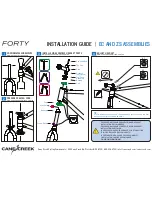
Page 22
Charging and Discharging
When the battery is charged, the battery communicates the increase in
% of charge as current flows into the battery. The battery stops charg-
ing when the internal temperature rises to a preset level indicating it
can not take any more charge. The % of charge reading should be
about 100% when charging is complete. If it is off a little (or even a lot)
the battery automatically resets the communication system to 100%.
During discharge, the battery measures the charge removed and
subtracts it from the '100% capacity number'. When the measured
charge removed equals half the '100% capacity number', the battery
communicates that it is at 50% charge. When the measured charge
removed approaches the '100% capacity number', the PowerBook
stops using power from that battery. This typically occurs at 4% or 5%
of indicated capacity. If the calibration is not correct, this can happen
with charge left in the battery.
All the while, on another data collection channel, the battery is measur-
ing and keeping track of how much charge is really being used.
If one battery is used in the PowerBook, it cuts the battery off at an
indicated 8.5 volts or 5% and throws away the measured charge data.
If two batteries are used in the PowerBook, the battery in the right slot
will discharge past an indicated 0% down to 7.8 volts. At this time the
battery takes the charge data it just measured and updates the '100%
capacity number' with a new number. The new, accurately measured
number now defines what 100% capacity is. The battery has now been
calibrated by the PowerBook system.






































